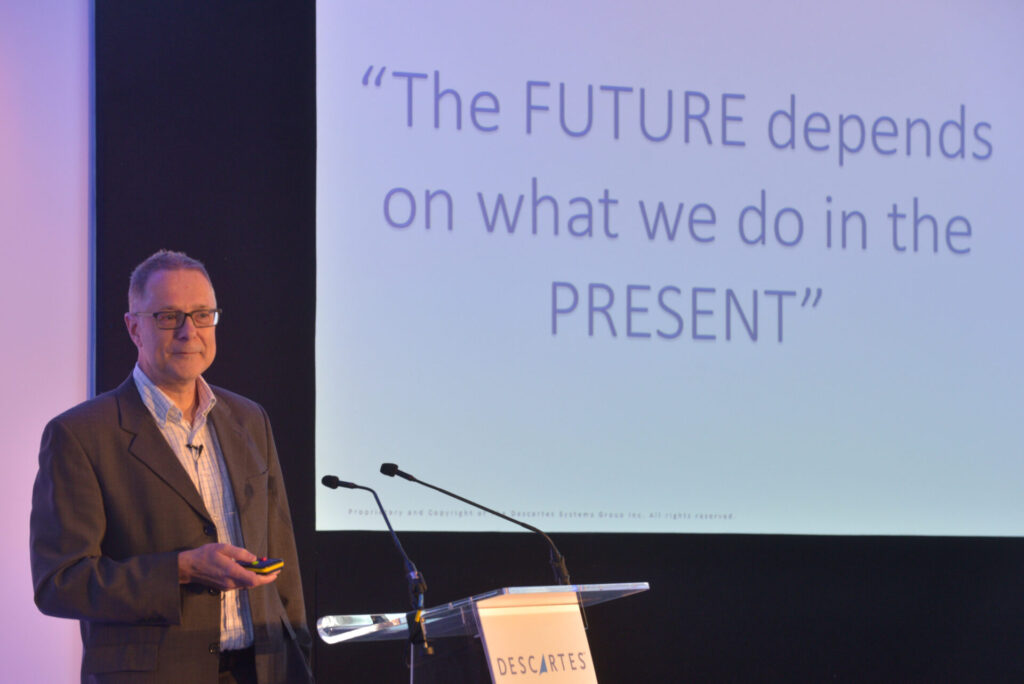By Andrew Tavener, Head of Marketing, Descartes
As ecommerce continues to thrive in the UK and across many countries, there is one question to ask retailers: does a mature ecommerce market truly offer the quality of delivery experience that its consumers expect and, if not, where do retailers and delivery organisations need to improve? Moreover, how have economic challenges affected online purchasing and delivery sentiment? So, for the third year in a row, Descartes, combined with SAPIO Research, surveyed 8,000 consumers in Europe and North America to gain a comprehensive view of the state of ecommerce and home delivery performance.
The study results indicate incremental year-over-year improvement in home delivery performance by retailers and delivery companies (e.g., carriers, couriers and logistics services providers). However, consumer dissatisfaction continues to affect retailers. Andrew Tavener, Head of Marketing for Fleet Solutions at Descartes Systems unpacks this and explains more.
A competitive advantage: delivery reliability and security
In some markets, notably North America and the U.K., ecommerce, as a percentage of purchases, is expected by consumers to exceed brick and mortar purchases in the next 12 months. Online consumers continue to become more sophisticated and knowledgeable too. Their purchasing decisions and brand perceptions are influenced by home delivery performance and their expectations are increasingly nuanced, reflecting the ever-expanding range of purchases in diverse product categories. Perceptions around cost, speed and timeliness of delivery, as well as security expectations, vary not only across countries and demographics but also depending on the type and value of purchase.
By improving delivery reliability and security, and offering more cost-effective delivery options, retailers can gain competitive differentiation, improve customer loyalty and improve the profitability of their ecommerce channels.
Consumers are more committed to ecommerce
Consumer interest in ecommerce also continues to grow, but no longer at the accelerated pace as during the pandemic. Ecommerce does, however, continue to gain traction with consumers as the study shows that 44% intend to increase their online purchasing frequency to at least every two weeks, compared to 34% in 2023 and 32% in 2022.
Furthermore, consumers are now accustomed to buying online and expect to make even more purchases for home delivery in the next 12 months. Consumers expect to make almost half (49.5%) of all purchases online within the next year—a 4.9% increase versus today (2024). Indeed, in some markets—notably the U.K. (59%) and North America (52%)—consumers expect to buy more often online than at a physical store within a 12-month period.
Consumers are enjoying the convenience (57%) of the online buying and delivery model and like the fact that the online ordering process has gotten easier (49%). Almost half (48%) also say they like home delivery because they don’t have to go out of their way to pick purchases up, further underlining the value of an effective, easy and convenient online shopping experience.
Inflation and delivery issues impact ecommerce
The effects of inflation and higher prices continue to impact the pace of ecommerce growth though. In 2024,“less disposable income” was again the top reason (42%) inhibiting online purchases, up from 37% in 2023 when, for the first time, it replaced “seeing the actual product before buying.” By contrast, less disposable income was the fifth highest choice in 2022, underscoring the impact on buying power that has occurred in the past two years.
It is, however, also true that delivery issues are cited as a barrier to purchasing in the future. When respondents were asked what would put them off making more online purchases in the future, one in five (21%) say they have had negative delivery experiences, 20% say deliveries are not reliable, 17% have been dissatisfied with the delivery process and 16% say deliveries are not environmentally friendly.
While retailers cannot address customers’ financial challenges, mediocre delivery performance and inconsistent delivery experiences are solvable problems. To avoid this barrier to purchasing, retailers and delivery organisations need to raise the quality and consistency of the home delivery experience.
Understanding customer delivery personas is an opportunity for retailers
When it comes to consumer expectations for home delivery, not all think about delivery in the same way. Consumers have different delivery personas. These can vary by the products being delivered. Delivery personas involve a combination of cost, delivery speed, precision, value-added services and information about delivery options (e.g., most environmentally friendly), which allow retailers to craft a number of delivery experiences that best fit their customers’ preferences.
Descartes’ study reinforces findings from 2023 that fewer customers are prepared to pay for fast delivery, preferring instead a lower cost alternative. While the era of instant gratification may not be completely over, more than two fifths (44%) cite “lowest cost, speed is less important” as the top delivery preference in 2024, up from 39% in 2023. Furthermore, 20% say they want a “precise delivery window, with speed being less important.” Just 15% rate “fastest delivery, with timeliness being less important” and only 13% say “fast and precise, with cost being less important.”
Expectations of the delivery experience vary not only between customer delivery personas but also across product categories within those personas, making it increasingly important for retailers to offer far more delivery choices to customers. While “lowest cost” remains the most important delivery option for all goods, consumers have understandably different needs for some purchases.
Low-cost delivery options Vs precise delivery windows
For example, low-cost delivery options are a clear priority for purchases of books (50%) and films/music (48%), yet low cost for grocery (30%) and medicines (30%) is only just slightly more important than speed (24% for grocery, 27% for medicines). A precise delivery window is important for larger format purchases such as furniture (27%) and white goods (26%), as well as groceries (23%) and electronics (23%).
These results further emphasise the importance of evolving from a monolithic delivery model towards one that offers consumers real choices. Retailers who cater to each customer’s specific characteristics throughout the buying process, including delivery, will be better positioned to maximise revenue and improve customer loyalty. Attaining greater insight into the delivery expectations and preferences of customers will also help to lower delivery costs and add significant value to the bottom line.
In addition to the “cost-versus-speed-versus-precision” aspect of delivery, it is important to understand how customers consider different aspects of their delivery experience. Once again, security (84%) is cited as the most important aspect of the delivery process, up from 81% in 2023 and 74% in 2022. This is closely followed by the cost of delivery (83%), which is up from 79% in 2023, underlining the economic squeeze faced by many consumers.
While the most significant shift this year is the increase in the importance of handling returns (75%), up from 69% in both 2022 and 2023, consumers are also looking for ease of ordering and booking (78%) and the ability to track a delivery (76%).
Creating a strong chain of custody is even more important, understandably, when it comes to making online purchases of expensive items. Providing proof of delivery (40%) is the top priority, up from 35% in 2023 and 30% in 2022, followed by security (36%) and delivery tracking (32%) as the most important factors when purchasing big ticket items. The addition of proof of delivery in various forms, including picture and signature capture, is now a core component of a good delivery experience for high-value items. As customers expect greater care of high-value products during delivery, leading retailers and delivery companies need to have the technology in place to provide these types of capabilities.
Conclusion
As ecommerce continues to be increasingly integral to consumer shopping habits, delivery performance remains a crucial differentiator for retailers. However, despite improvements in delivery reliability, many consumers continue to report dissatisfaction, particularly concerning cost, speed, and security. Inflation and financial constraints further complicate this landscape, affecting purchasing power, all of which emphasise the importance of cost-effective delivery solutions.
To succeed, retailers must address these challenges by offering diverse delivery options that align with varied consumer expectations. By doing so, they can enhance customer loyalty and profitability, ensuring a more consistent and satisfactory delivery experience that meets the evolving demands of online shoppers.







